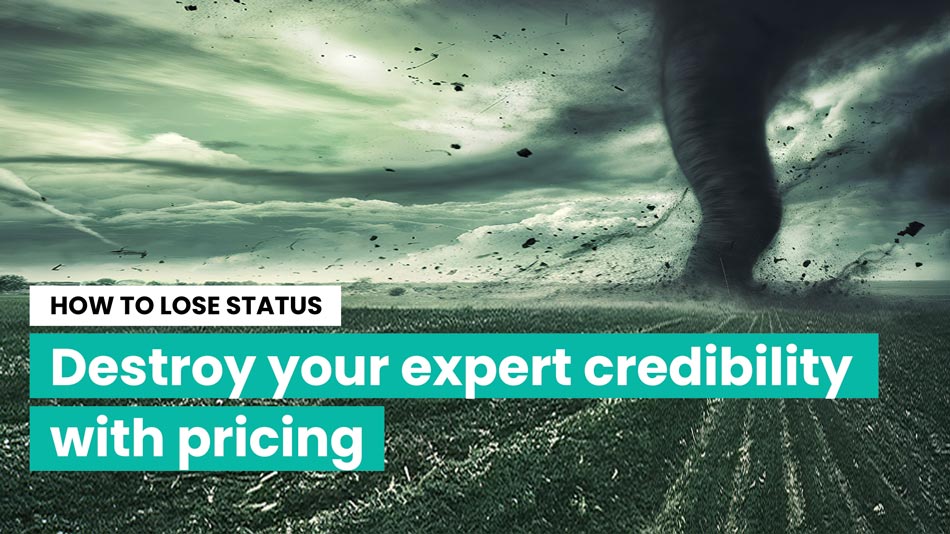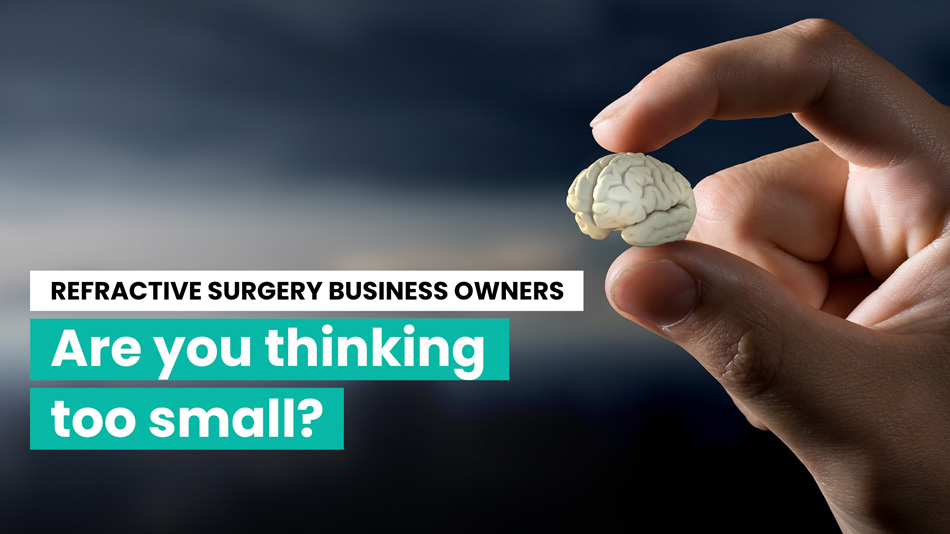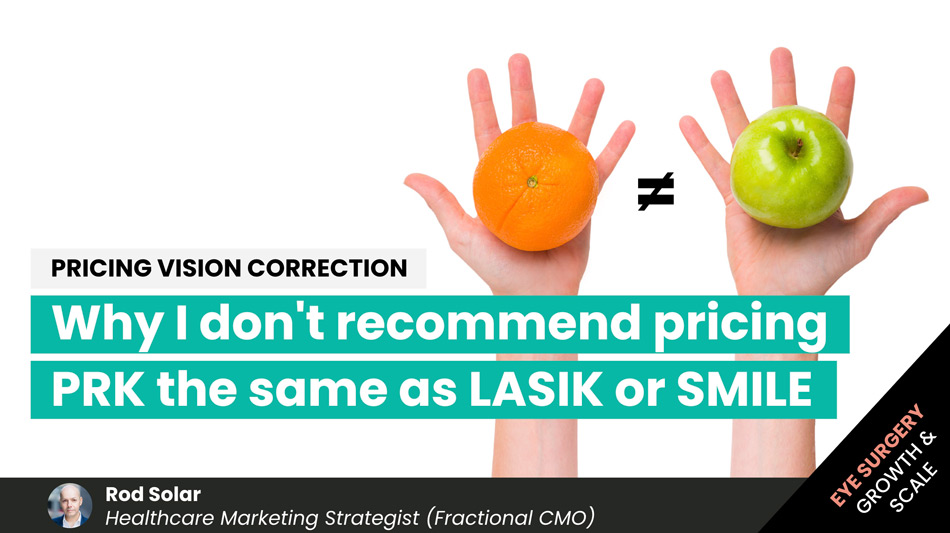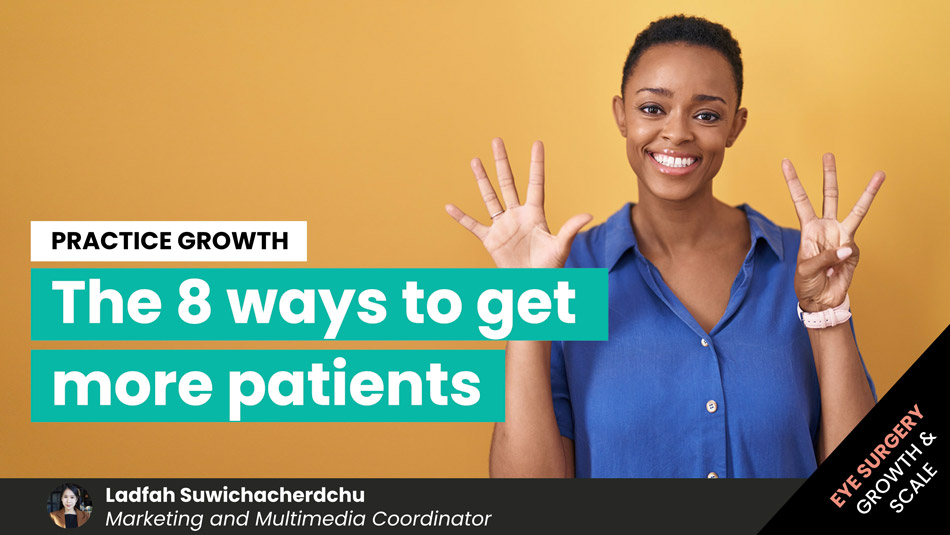Five essential steps to grow a profitable healthcare practice
Laura Livesey:
Okay, great. So I’m Laura Livesey.
Rod Solar:
And I’m Rod Solar.
Laura Livesey:
And we run a company called LiveseySolar. We are in the business of helping hospitals and doctors, and business managers to grow private healthcare care businesses to become the thriving practices that they can become.
We don’t help every practice. We help practices that offer high value and interested in providing remarkable customer care for their patients.
We can build a system for them, that once running, the referrals alone are going to drive happy customers back to the top of the sales pipeline. A great side-effect is that you can reduce your overall marketing costs
So that gives you an essential idea of how you need to define your offering in the sense of who you want to come to you.
And you have to get clear on that. And that’s really what the foundation is about, is identifying who those people are, what they want, what they feel, and what their average day is like?
What are the five essential steps to grow a profitable healthcare practice?
Rod Solar:
Yeah, so, I mean, there are five steps. I think many people can be relieved about that because one of the challenges that many people find when marketing their practice is the complexity of the options and information that’s out there that makes everything somewhat confusing.
So the five steps is an excellent way to understand the things that facilitate the movement of an individual from the awareness stage (and perhaps the stage at which they’re not even aware of you) to the point where they come out the other side of the journey as a happy, excited patient. A patient who recommends you and advocates for your services wherever they can find their friends and family there to listen to it.
Laura Livesey:
Yeah. Cool. So I think the five steps just before we talk you through them are marketing. So
- market
- call
- meet
- price and
- serve
Those are the five essential components of a thriving healthcare practice. But we’re going to break those down for you. And I think number one is a kind of interesting one, isn’t it? Because it has two steps, it almost has a pre-step required before you can even graduate to step one.
Rod Solar:
Yeah, yeah, exactly. Sometimes we call this step zero. If you think about packing for a long journey, that’s what the step’s all about is, okay?
Like, I need a map. If I need to find out where I’m going to go, the first step is I need a map. And once I get a map, I have to identify who’s coming with me and how long we will take to get there?
How much funding do I need to equip myself on this journey? And most importantly, what are the essential tools and materials I’m going to need to get me from where I start today to the end of the journey where I want to be?
Laura Livesey:
Yeah, yeah. And I would even say that the essential question hidden in all of that is “Who am I?” Even as a person, who am I as a practitioner indeed? And “who am I in terms of what I want out of life?” The big question.
Rod Solar:
Yeah. The big question. Yeah, exactly. Which leads to the “why”.
It’s like, why do I want to do this? Because I’m sure those of you who are in the throes of starting a practice independently or perhaps at the moment where you’ve plateaued, you know how much difficulty you’re facing; you know how much time it takes.
And the time that you’re investing is often unpaid and at the expense of all the things, you could be doing with your leisure time.
- Have dinner with your family
- Spending time with your kids
- Enjoying your weekends
- Practising your hobbies and your sports
Unfortunately, all those things you want have been something you’ve had to put aside because now you’re growing your practice. And that’s a real challenge and a big wake up call for many people to deal with.
The foundation (Step 0 of building a profitable healthcare practice)
Laura Livesey:
So let’s jump into that. But, first, let’s jump into step one (the prequel), step zero: foundation. So how do you get yourself ready before you can even do step one to market?
Rod Solar:
I love it. The prequel. Exactly. That’s where we introduce the characters and lay the whole foundation.
Imagine this like a house. So, in a home, what’s the first thing you do? Do you start putting up the walls? Do you start painting the place? Do you start bringing in the furniture? No.
The first thing you have to do is plan it out and lay a proper foundation. And that’s why we call this the foundation step. So in a foundation step, the critical thing that we’re aiming to understand is the product and market fit.
So who are you? And how is it that you do what you do? And what do you do? But most importantly, why do you do it?
And mix that with who are the customers that you’re trying to attract? What do they want? And why do they want it?
So, if we can identify that mix and put those things together, we know we’re in a place where you will have a receptive market for whatever you’re offering.
Laura Livesey:
One of our clients summed it up well, and we hadn’t even thought of it this way, but he said, “What LiveseySolar does is we help people find you if you are what they want.”
And that’s a big one because not everyone wants what you want, and that’s okay. We don’t want everyone. We only want those people that actually will have an affinity for you.
Rod Solar:
Absolutely. And every doctor, every consultant, basically every service provider out there has strengths, and they have weaknesses. So one of the critical things to do at the forefront is to understand your strengths and weaknesses. And understand how to push your strengths forward and help you identify who the people who will value those strengths are. Who are the people prepared to pay for the strengths that you offer? And who are the folks who will follow you as a guide to get them to where they want to go?
Laura Livesey:
And that gets you to the point where now, you can market, which step one.
Step 1 of building a profitable healthcare practice – Market
Rod Solar:
Yeah. So once you have your customer avatar in mind, and we’re keen to help practices understand who is it that they’re talking to.
And exactly, as Laura said, you have to understand who they are, where they are now and where they want to go after they’ve worked with you as their guide?
And the marketing aspect all begins in trying to generate awareness.
So there are loads and loads of tactics out there. And I’m sure that you’ve been approached or have even tried many tactics that might have worked. And maybe a lot of them haven’t worked, and I feel that if you’re listening to this podcast right now, you’re probably in the category of where we find many people, which is they’ve tried stuff, and it didn’t work.
Laura Livesey:
Yeah. And I think that the marketing side is not working because you haven’t done that prequel, that foundational step, which is who do you want to market to?
And then once you know who, you can figure out where they are hanging out? So again, online usually, sometimes offline, figuring out maybe some magazines or newspapers, we’ll go into that in another podcast. And also, other videos on the Trust Health website explain why you probably want to look for online places. And then once you figure that out, where are they hanging out online, you’ll know, okay, great.
“I need to be going after people on Facebook. I need to pay for some ads to show up on Facebook because this is where my target group is living at the moment. That is where my ideal customer is.”
Or
“I might be wanting to use Google AdWords, or I might want to create some content and find that many people are looking at a specific concern or feeling around the condition they have, and I want my website to pop up.
“So I’m going to create lots of content, written content, and video content on my website to show up in organic search listings.
So you have to figure out what it is that they need. And the essence of marketing is getting people to find you when you are what you need, but you do it with marketing tactics that intersect with them at the moment of their need.
Rod Solar:
And the messaging in your marketing is about helping people understand (and helping you articulate) how to get from their before-state to their after-state.
And you focus your message on that. That is opposed to focusing on your technology or technique or talking too much about your expertise or training. Or all of those things about you.
And I think you have to remember carefully and put up every piece of marketing material up to a filter and ask yourself, is this resonating with my customer avatar’s unique aspirations to get from their before state to their after state?
And if you’ve got that sewn up, then it’s a question of executing consistently and cost-effectively. So that’s the marketing step.
There are many, many more things that we could talk about, but we need to move on to the next step. Step two “Call”.
Step 2 of building a profitable healthcare practice – Call
Laura Livesey:
But you’ll notice how much time we spent on the marketing step and how much care and attention we put into crafting that message.
But everything else that comes after this step is equally vital because you’re creating a system. You’re making a cascading series of steps that you’re taking people through on a journey so that they can start from feeling uncomfortable or hurt or whatever it is that they’re feeling before they find you and going through a process of being guided.
And we’ll share what that looks like now that you’ve done your marketing and you’ve gotten the first step, which is somebody to call you or somebody to inquire on your website. So what happens next?
Rod Solar:
There must be a call to action in every marketing piece that you offer. And most typically, when consultants are offering their services, it’s a phone call where while we’re moving towards the days where we have chatbots and social media interactions and text messages and things like that, they’re all definitely on the horizon, and they’re coming fast. But at the moment, right now, still the phone call is the number one medium used to do what? Well, to sell treatment? No. To sell services? No. Defacto, to sell an appointment.
And that’s the key driver behind a phone call. That’s what you want to do. And that’s how you have to measure those phone calls.
So one of the things I’ve found when we’re interacting with practices is that they often don’t measure the amount of call volume that they get, and that’s a challenge because you can’t manage what you don’t count.
If you don’t know how many calls you’re getting and how many calls are converting into appointments, you cannot monitor, track, reward, and improve the call conversion rate.
And call conversion rate is absolutely a critical KPI for any practice to be watching day in, day out, and to dedicate a responsible and accountable person for that call conversion rate. And that’s not likely to be just somebody who happens to be helping you with paperwork.
That is usually somebody who needs training, who needs some assertiveness on the phone and who needs to know what you’re offering, but most importantly, can ask good questions. And I think that the process of asking questions on the phone is a little bit different for many.
I often hear people answer many questions on the other side of the telephone.
So the patient will call up and say, “Okay, I got all these questions. How much is it?” That’s usually where the conversation ends if you’re priced high. And if they manage to get you past that point, they’ll ask more questions and more questions. And you do a great job of answering those questions, but unfortunately, that’s not going to do it.
You need to engage the prospect on their level and ask them questions about who they are?
- What’s motivating them to change? When do they want to do it?
- What else have they tried before?
- What are they looking to experience after surgery?
- When they want to take the next step, which is booking the appointment.
Laura Livesey:
Cool. Yeah. So that’s step two. And that is the call step. And the first thing we’d recommend for step two is that there are some resources below our podcast, and you can get a link. And you’re going to be able to get a tracking sheet that Rod mentioned where you can see who is calling and what happened to those calls.
Because you often only record the calls that get booked in a database system. Instead, you want to record every call (and the fails, really, those that didn’t book through) because that gives you that live conversion rate. So that’s step two.
(NOTE: Want to see how your practice marketing measures up against the best in class? Take this 5-minute quiz to see how you stack up in the 9 areas of practice marketing and get specific tips and advice on how you can improve your weak points and better leverage your strengths).
Step 3 of building a profitable healthcare practice – Meet
And then, we move into step three. So, the patient calls and books. Now they’re coming in. This step will differ depending on what people are looking for.
So let’s start with somebody coming in. They’re not ready to pay for surgery or treatment yet. The patient is coming in for an initial consultation. Often it’s free or for a meagre value. Something we call a tripwire, which is an exchange of value, high-value for a light cost or some time.
So this is somebody who’s invested. The prospect wouldn’t be here before you if they weren’t interested and seriously considering it. And so, what you need to do is excite them at this appointment to become a patient or not want to become a patient.
And let me explain. We want a clear yes or no because we’re not hammering someone into something they don’t want. So we’re very, very clear on that.
This process that we’re talking about at the initial appointment is elegant and very suited for medicine. And it’s set up to guide somebody through a process, so they feel better after they left the appointment, even if they said “no” than when they came in, because you’ve helped them make a decision.
So really, we’re asking questions. We’re taking a leadership role at the consultation. We’re doing our assessments and everything we need to do medically, but this is a highly psychologically important process and consultation for the patient. And we need to address their emotional needs primarily. And that may sound a little bit odd and maybe shocking for some, but we need to highly consider what they’re thinking and what they’re going through at that appointment if we want to have a very successful practice and grow that practice.
Because this appointment introduces them to your practice, what is the level of quality? So does the level of customer service match the level of medical quality? That’s critical.
And it’s also introducing the type of people you’re going to be interacting with, if there is a lot of follow up, and a lot of medical procedures have one day, three days, one-month, and annual checkups. So you’re going to get into a relationship with somebody. And so, really at this stage, we’re cementing that relationship and saying, yeah, I like you. We can do business together. We can hang out together. We can spend time together and enjoy that process.
And hopefully, that’s the decision they make. And they say “yes”, but on the flip side, they might have the opposite reaction, and maybe they’re not suitable for you. And you want to know that you don’t want those patients. Those are the patients that’ll be the headaches, the hassles, even the legal risk down the road. So we want to run this tightly to get a yes or a no answer. So that is step 3.
Rod Solar:
Absolutely. The key underscore I need to make under step three is you have to have what we call either a patient advisor or a counsellor, or a liaison.
It doesn’t matter what you call them as long as the patient feels like that role is for them. And that person needs to be able to facilitate and concierge the patient through the pathway.
So the path has to be organized and scripted. And I don’t mean having people specifically say specific things, but rather, we need to know where along a pathway we go and who sees whom at what level.
And we need to progressively hand over the patient from one person to another so that they feel like they have one constant touchpoint throughout the service.
And it’s super important that the patient liaison sees that patient before (at the very beginning, right after reception) and understands their motivations. And the liaison must understand what the patient is looking for so that they can end the consultation by asking them for the next step (payment and a deposit to move to treatment).
If they only show up at the end, they look like bill collectors. So they have to be there to make a relationship with the patient to organize themselves around the patient’s journey to come to them from a position of trust.
Step 4 of building a profitable healthcare practice – Price
Laura Livesey:
Great. So one of the things that most people think is the most important thing is not the essential item in the making a decision, which is price.
So you’ve got anxiety around price. I think almost everyone does. “How much should I charge? Should I raise my prices? Is that going to make everyone go away? I assume they’re going down the road to these other two competitors because they charge £100 less than I do.”
So, where does price sit in this as step four? What do you think, or what is the essential thing I should say that people need to know about pricing their services?
Rod Solar:
The number one thing that people need to know about pricing is that it’s not about pricing. The pricing is all about; really, it’s something objective that people can talk about, which is one of the reasons why most people, when they call a practice, say, “how much does it cost?” Because most patients don’t have anything else on which to base –
Laura Livesey:
That’s all they know to ask.
Rod Solar:
Their decision.
Laura Livesey:
They can’t look at your CV.
Rod Solar:
Exactly.
Laura Livesey:
They have no idea.
Rod Solar:
And often, they’re not that interested in your CV. Instead, they’re most interested in “What will you do for me?
“How will you get me to the state that I need to go to?”
And sometimes, they’re not even wholly crystallized on what that state is. So you have to help them do that.
But pricing is just a language that we can all use to estimate value. Still, instead of allowing price to dictate how people value what we offer, I would instead provide as much value as possible so that we can then associate a price that is justifiable from that value.
So with price, of course, you’ve got to think about your competitors. You’ve got to think about what people can afford. You have to think about ensuring that you have sufficient money to pay for what it costs to deliver your service and leave something aside for operating expenses and additional variable expenses and retain some profit. So all of these things matter in pricing.
However, with that said, it’s imperative to consider “the value that I provide and how I will price it according to that value?”
So take an example. If you conceptualize the value of what you offer, the patient is going to walk in with glasses on, and I’m a laser eye surgeon, so what I’m going to do is I’m going to lay you on a bed after we do about an hour and a half or three hours of tests. I will lay you on the bed, and then I will do a treatment that takes 15 minutes. I’m going to treat your eyes, laser them, then suddenly, you get up off the bed and see. Fantastic. Then I’ll see you for maybe about another hour and a half over a prolonged period in aftercare. You sum all that up, and you say that’s about seven hours of service, six hours of service.
Is that how you’re going to price your offering? No.
What you need to do is you need to think,
- What kind of change am I making for this patient?
- Where are they before?
- And where do they want to go after surgery?
- How much am I changing their life?
Because the distance between where are you find them before and where you take them after is how you can define the value of your service.
The longer the distance, the bigger the value. So, therefore, it’s entirely possible to charge very high amounts as long as the patient perceives there’s value. That is not a sham; it’s not a trick; it’s enabling you to provide the very best service you can, which patients want.
Laura Livesey:
And sometimes, that fits your avatar. We often use, with very, very high-end offerings and consultants. We use the words reassuringly expensive because occasionally if somebody runs into a clinic that is excellent, really world-class, but they’re pricing mid-market. People think, “Oh, what’s wrong here? There must be something wrong. It doesn’t make any sense. Why are they cheaper than these other guys that seem to be not offering the same service?”
So it is, you need to look at the competition, but that’s not the only thing. You need to look at the market you’re in. You need to look at the avatars you’re going after. The other thing I would say about price is you also need to look at how you distribute the price, and psychologically speaking, do you have one fee upfront, or do you look at financing?
Financing is something that people often overlook, especially with a lower-priced offering, like chiropractic or something like that, where an individual offering or day, if you’re coming in for a session, I should say is 70 quid or something like that. So somebody’s coming in; they’re getting that.
But if you look at the value of that customer to you over one year or two years, you can start to think, okay, this person doesn’t need one session. And if this is true for you, I want you to look at this. But, on the other hand, if they genuinely want to get well and need ten sessions or 15 sessions, you should be offering them if you think about providing them with the best solution to their problem. And so then financing can be something that you could use for that.
So if you have a £4,000, £5,000 procedure, that’s a no brainer, but we find a 20 to 30% increase in uptake if you have a financing option. So looking at splitting up a price may sound very “salesy”. But, still, you’re offering people who otherwise may not be able to get in the ring and get what they want, to be able to do business with you and happily so.
Rod Solar:
Yeah. And the final point about pricing is that the number one reason consultants in private practice overwork and abandon all the things that made them happy apart from their practice is undercharging.
So they’re in a position of their own making that they to work so hard to generate the money that’s sufficient to fund the practise because they’re underpricing, that they lose all ability to enjoy their lives. That leads to burnout, which leads to the erosion of the reason you got into practice in the first place, which is usually to get a better life.
Laura Livesey:
So don’t look at the price. The moral of the story is don’t look at price as a barrier. Look at it as something you need to consider in terms of value. So don’t be so afraid of cost; build up the value instead.
Step 5 of building a profitable healthcare practice – Serve
And that leads us to step five, a fantastic value-building service you offer at every step – every customer touchpoint. So whether that’s the website, even the ad that you put up, high-quality across the board ads, website, initial phone call, consultation, premises, everything that you do, anything that somebody touches or sees, the loos, everything has to be at the level of service that you’ve advertised.
And it has to be at the expectation level of the avatar that you’re trying to go after. I’m not saying everything needs to be extraordinarily posh and four or five stars. That might not be what your avatar wants. And that might not be what you are after. So, that’s fine.
But it has to suit the feeling that you’re trying to create in the mind of your avatar. So service is critical when reducing your cost per lead. Why do I say that?
Because you are marketing, you’ve spent money on everybody that rings or emails you. You pay for traffic online, build a website, and do everything you do.
So you can break it down into a cost per lead. Now, if you start to up your service game and you can look at, there’s a cost to that and offering lovely refreshments and giving people excellent coffee and all that kind of thing, you have a cost for that. But if you start to do that, you need to market the same, or even less, because you will create what we call remarkable service. Remarkable. People are making remarks. They’re telling people.
And the better your service is across the board and it’s scripted, and you have a process for it, the more referrals you’re going to get, and the more promotion that’s going to happen on your behalf, essentially for free.
So, it’s coming off the back of a lot of hard work and many systems, but you are creating an environment where you can reduce your cost per lead. And that is a factor that’s making your patients happy obviously, but making you very happy. So it’s a very virtuous cycle.
Rod Solar:
And remember to surprise people consistently throughout the journey. A lot of people think that marketing is all about making promises. The reality is under-promising and then over-delivering. And I think that what you want always to be conscious of is that service is a massive part of marketing. Marketing is not just about getting bums on seats; it’s about keeping them warm while they’re there.
And critically, you need to be able to offer built-in surprises, no surprises to you. But, of course, you’ve planned them well out in advance. Built-in surprises delight and excite customers along the way so that you trigger those folks who are going to go out there and tell the world about you.
Every single practice will have what we refer to as “raving fans”. And those raving fans will go around and talk to other people about what you did.
And I mean, that’s a fantastic thing to have because the more of those folks you have, as Laura said, the more free marketing you will receive from your patients, which reduces your need to invest as much money as you already do on marketing. So that brings us full circle back to marketing.
Laura Livesey:
And I hope you’ve enjoyed our discussion today about how to grow a profitable healthcare practice using these five essential steps.
Recap
Step one is to market. But before that, you’ve got to figure out “who am I? Who is my ideal customer? And where do we intersect?” So that then you can find them online, via marketing.
How do you deal with them when they first inquire? How do you turn that? How much does it cost for somebody who’s making a booking? That’s step two, call.
Step three is once they’ve made the booking, you’re meeting with them at a consultation. So how do you turn that consultation into a yes or a no, a clear yes or a no? Hopefully, yes. As a reference point, 40 to 60% of initial consultations turn into a yes if you don’t have a system in place. If you have a plan in place, 60 to 80% of initial consultations usually become actual patients. So that’s a huge lever for you. And I should say as well at the call stage; it’s very similar. If you have a process in the call, you’ll get 15 to 25% of people who call you to book a consultation. If you have a strategy, you’ll often get 50 to upwards. We’ve seen boutique, independent clinics get 80% on the telephone, which is unreal, but it’s possible if you have a particular setup. So these figures are exciting.
So going back though, step three, meeting. So you want to get that initial consult working out for you and turn people into patients.
Step four, get your pricing sorted out, figure out why you’re pricing, how you’re pricing, doe it suit the market? Does it fit the patient? Do you have financing in place?
And then step five is to serve people in a way that creates remarks that is remarkable so that you can grow the thriving practice that we know that you all want.
(NOTE: Want to see how your practice marketing measures up against the best in class? Take this 5-minute quiz to see how you stack up in the 9 areas of practice marketing and get specific tips and advice on how you can improve your weak points and better leverage your strengths).
About the author

LiveseySolar
LiveseySolar’s mission is to double the size of 150 cataract and refractive surgery practices. Using our proven marketing frameworks and deep market knowledge, our customers can predictably and sustainably grow their practices so that they can enjoy a healthy balance between both worlds – a successful private practice and a happy life.
Related Posts
Meet our Co-Founders
We’re passionate about helping leaders of high-quality, growth-minded practice owners double their practice revenue
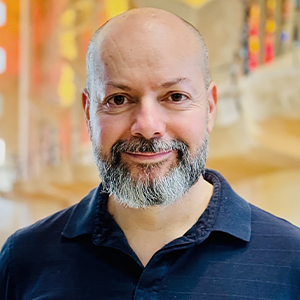
Rod Solar
Founder & Scalable Business Advisor
For over 20 years, I’ve helped ophthalmology entrepreneurs scale their private practices. I specialise in doubling revenue within three years by offering a proven framework, hands-on experience, and a team of experts who implement what works. We take the guesswork out of growth and scale, so you can focus on delivering exceptional patient care while maximising the value of your business.
LiveseySolar completely transformed the way we were approaching this… We’ve gone from having just the dream of having a practice to having a practice up and running with people making inquiries and booking for procedures… It’s extremely pleasing. We feel lucky we connected with LiveseySolar.
— Dr Matthew Russell, MBChB, FRANZCO, specialist ophthalmic surgeon and founder of VSON and OKKO

Laura Livesey
Founder & CEO
I’m the co-founder & CEO of LiveseySolar. I’ve developed powerful eye surgery marketing systems that increase patient volumes and profits for doctors, clinics, and hospitals, since 1997.
Rod and Laura know as much about marketing surgery to patients as I know about performing it. They are an expert in the field of laser eye surgery marketing. They know this industry inside out. I believe that they could help many companies in a variety of areas including marketing materials, sales training and marketing support for doctors.
— Prof. Dan Reinstein, MD MA FRSC DABO, founder of the London Vision Clinic, UK






